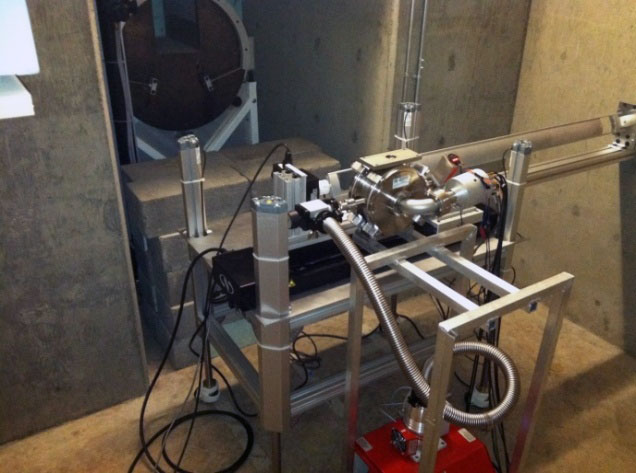
Completed in late 2004, the Neutron Radiography Facility (NRF) represented a major structural expansion of the facility. The NRF is essentially a large shielded room (8 ft X 8 ft X 9 ft) containing a highly collimated beam. The NRF utilizes beam port #3 because the tangential orientation of the beam port allows predominately thermal neutrons to stream down the tube while minimizing the amount of gamma radiation contaminating the beam. A collimator was placed in beam, port #3 to optimally collimate and filter the beam and is composed of a bismuth filter, a series of decreasing rings of lead down to a 2 cm boral aperture, and a series of increasing diameter rings. The end of the collimator contains a boral plate with a 6 x 7 inch opening to form a square emitted beam shape. The bismuth filter substantially removes the unwanted gamma radiation while being fairly transparent to thermal neutrons. Using conventional film, the beam was determined to meet the requirements of an ASTM E545 Category 1 neutron radiography beam. The facility was designed with a preferred L/D ratio of 100. Measurements of the beam using a No Umbra device and following the procedure outlined in ASTM E803 determined the L/D ratio to range from 86 ± 4 to 117 ± 4, depending upon the location within the NRF (i.e., close to the shutter at the start of the beam or close to the beam stop). While the facility can be used for any purpose, neutron radiographs can be taken with two independent systems: